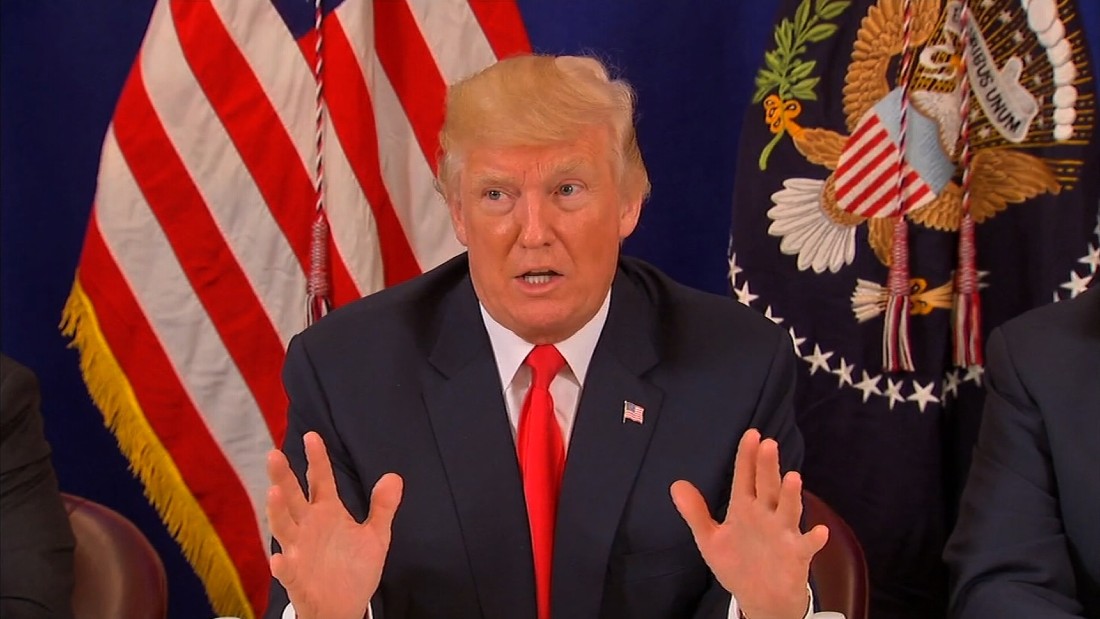Trump's Focus On Streamlining Nuclear Power Plant Construction

Table of Contents
Regulatory Reforms Under the Trump Administration
The Trump administration sought to expedite the nuclear power plant construction process primarily through regulatory reform, focusing on streamlining the Nuclear Regulatory Commission (NRC) and environmental impact assessments.
Streamlining the Nuclear Regulatory Commission (NRC) Process
The NRC plays a crucial role in licensing and regulating nuclear power plants in the United States. The Trump administration aimed to reduce permitting times and simplify the approval process through several key actions.
- Changes to licensing procedures: Specific regulations were altered to expedite the review and approval of applications for new nuclear power plants. This involved streamlining paperwork, reducing the number of required reports, and clarifying approval criteria. The goal was to reduce bureaucratic hurdles and shorten the overall licensing timeline.
- Prioritization of applications: The NRC was encouraged to prioritize applications for new nuclear power plants, expediting the review of key applications deemed vital to the administration’s energy policy goals.
- Increased staffing and resources: The administration attempted to address staffing shortages within the NRC to help manage the increased workload associated with streamlining the review process.
However, these changes were not without controversy. Critics argued that the prioritization of speed over thoroughness could compromise safety standards and lead to inadequate review of applications. The debate over balancing efficiency with safety remains central to the discussion surrounding nuclear licensing and permitting reform.
Reducing Environmental Impact Assessments
Environmental reviews, primarily under the National Environmental Policy Act (NEPA), are a significant part of the nuclear power plant approval process. The Trump administration sought to streamline these reviews, aiming to reduce delays without compromising environmental protection.
- Expedited environmental reviews: Efforts were made to accelerate the environmental impact statement (EIS) process, reducing the time required for review and approval. This involved prioritizing certain projects and streamlining the review process itself.
- Reinterpretation of NEPA requirements: Some argued that the administration's approach involved reinterpreting the requirements of NEPA to allow for quicker reviews, potentially leading to less comprehensive assessments of environmental impacts.
This accelerated approach to environmental review for nuclear power plant environmental impact assessment was heavily criticized by environmental groups, who argued that it could lead to unforeseen environmental consequences. The tension between the need for timely project completion and thorough environmental protection remains a significant challenge.
Financial Incentives and Support for Nuclear Power
Beyond regulatory reforms, the Trump administration also sought to boost the nuclear energy sector through financial incentives and support for advanced reactor technologies.
Tax Credits and Loan Guarantees
To encourage private investment in new nuclear power plant construction, the administration explored and implemented various financial incentives.
- Production tax credit: Tax credits for nuclear power plant developers were considered, offering a potential financial benefit for investors. These would aim to make nuclear energy more competitive with other energy sources.
- Loan guarantees: Government-backed loan guarantees could reduce the financial risk associated with nuclear plant construction, making it easier for developers to secure funding from private lenders.
These government subsidies for nuclear power, particularly loan guarantees for nuclear power, aim to stimulate private investment in a sector that historically requires significant upfront capital.
Support for Advanced Reactor Technologies
The administration also showed interest in supporting the development and deployment of advanced reactor technologies, such as small modular reactors (SMRs).
- Research and development funding: Increased investment in R&D for advanced reactor designs was considered. SMRs offer the potential for faster and cheaper construction compared to traditional large-scale reactors.
- Regulatory pathways for SMRs: Efforts were made to simplify the regulatory pathways for approving advanced reactor designs, potentially accelerating their deployment.
The hope was that innovative nuclear power plant designs like small modular reactors (SMR) could overcome many of the construction challenges associated with traditional nuclear power plants, potentially making them a more cost-effective and attractive clean energy option.
Impacts and Criticisms of Trump's Policies
Assessing the true impact of Trump's policies on the construction of nuclear power plants requires careful analysis of both successes and failures.
Successes and Failures
While the administration's intentions were to expedite the process and reduce costs, the actual impact remains a subject of debate.
- Limited impact on construction timelines: Despite regulatory changes, there was limited demonstrable evidence of significant reductions in construction timelines for nuclear power plants. Many projects continued to experience delays.
- Mixed results in attracting investment: While some financial incentives were enacted, the impact on attracting private investment in nuclear energy was mixed, with many projects still facing funding challenges.
Analyzing nuclear power plant construction costs and nuclear power plant construction timelines affected by these policies is critical to understanding their overall effectiveness. The data needs careful review to account for numerous factors beyond policy alone.
Safety Concerns and Public Opinion
A major concern surrounding Trump's policies was the potential for compromises in safety standards. Additionally, public perception of nuclear power remained a factor.
- Maintaining safety standards: Critics raised concerns that the drive for speed could compromise safety regulations, leading to potential risks. Addressing these concerns was crucial.
- Public acceptance of nuclear power: Public perception and acceptance of nuclear power plant construction continued to be a significant obstacle in many locations.
The balance between economic goals and nuclear safety, as well as addressing public perception of nuclear power, continues to be a central challenge in the debate about the future of nuclear energy.
Conclusion
Trump's administration made a significant effort to streamline nuclear power plant construction through regulatory reform and financial incentives. While the initiative aimed to accelerate construction and reduce costs, the actual impact was mixed. Challenges remain in balancing the need for efficient approvals with safety standards, attracting private investment, and addressing public concerns. To learn more about the ongoing challenges and opportunities in nuclear energy and the crucial role of government policy in shaping its future, explore resources dedicated to accelerating nuclear power development and regulatory reform for nuclear energy. Further research into streamlining nuclear power plant construction is needed to fully understand the long-term implications of these policies.

Featured Posts
-
 The Aaron Judge Lineup Debate Boones Justification And Future Implications
May 11, 2025
The Aaron Judge Lineup Debate Boones Justification And Future Implications
May 11, 2025 -
 Mc Laughlin Secures Pole In Thrilling St Petersburg Gp Qualifying
May 11, 2025
Mc Laughlin Secures Pole In Thrilling St Petersburg Gp Qualifying
May 11, 2025 -
 Efficient Automated Visual Inspection Of Lyophilized Vials Addressing Key Challenges
May 11, 2025
Efficient Automated Visual Inspection Of Lyophilized Vials Addressing Key Challenges
May 11, 2025 -
 Dityachi Foto Printsa Endryu Do 65 Richchya
May 11, 2025
Dityachi Foto Printsa Endryu Do 65 Richchya
May 11, 2025 -
 Shevchenko Vs Fiorot Ufc 315 Fight Predictions And Betting Odds
May 11, 2025
Shevchenko Vs Fiorot Ufc 315 Fight Predictions And Betting Odds
May 11, 2025
